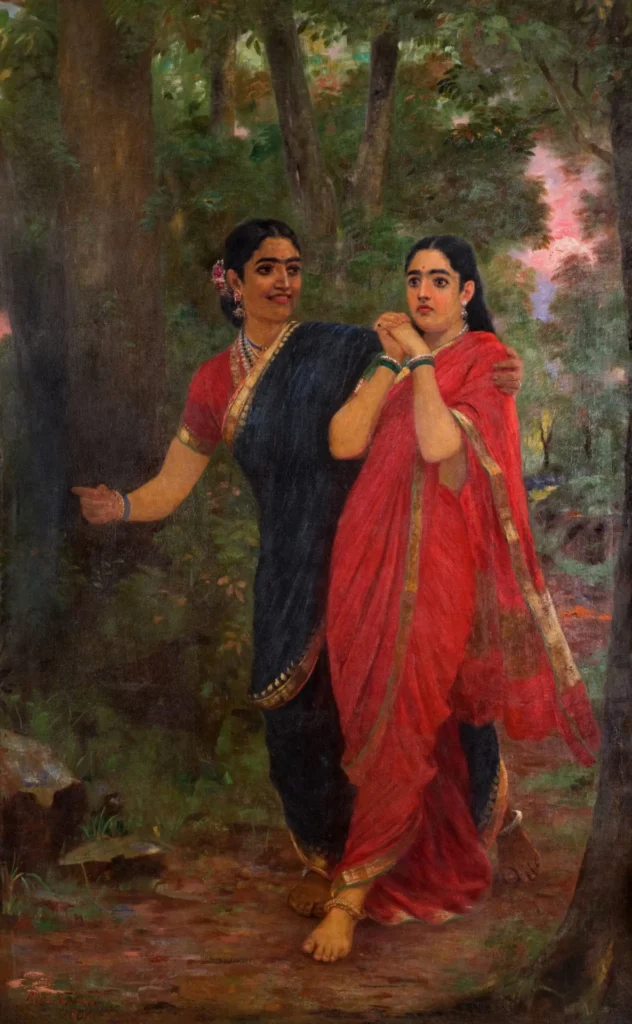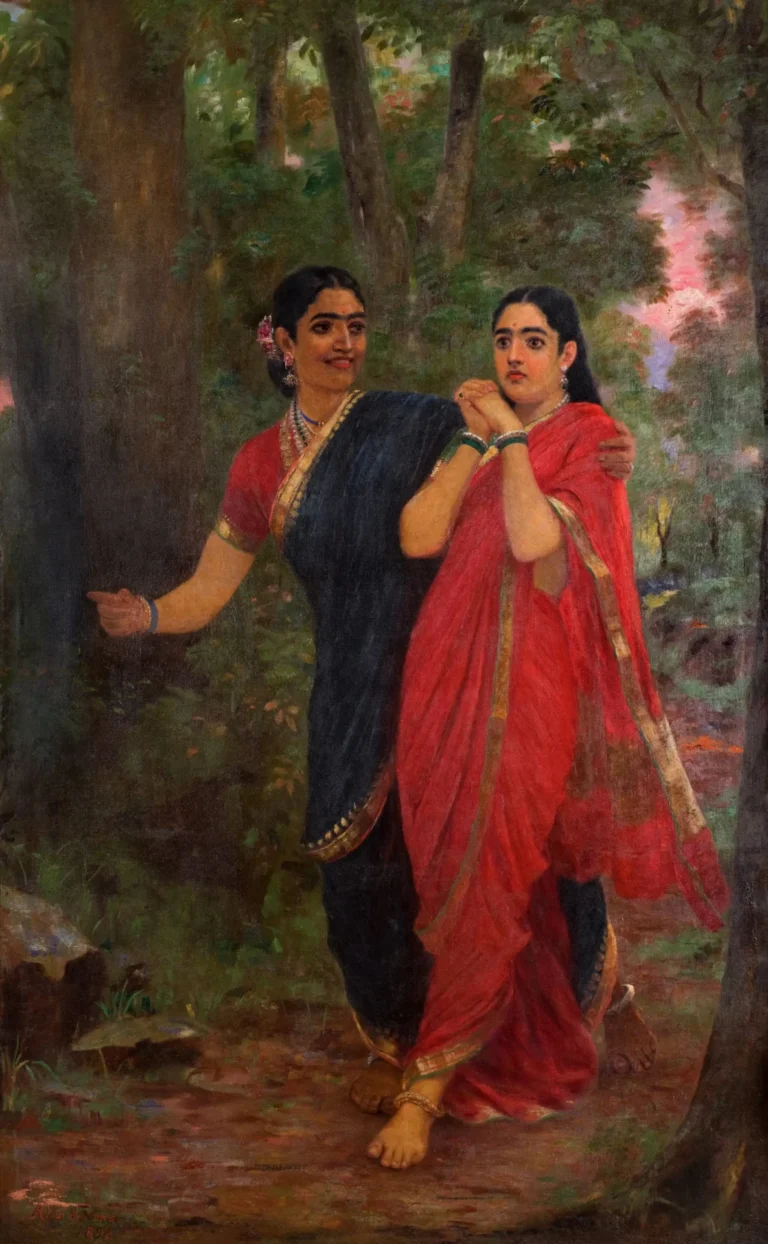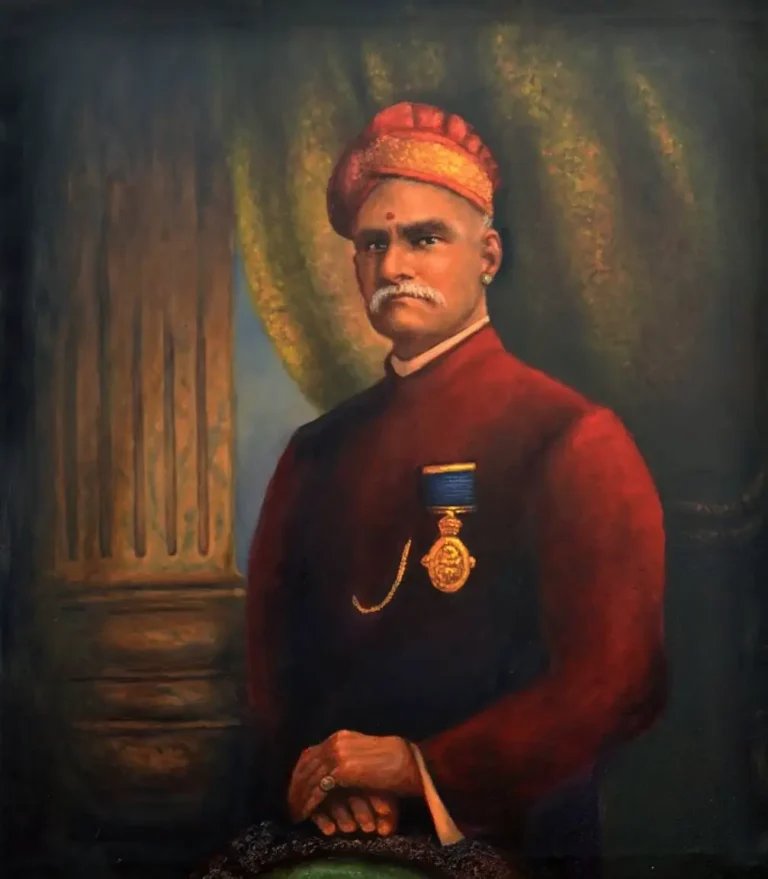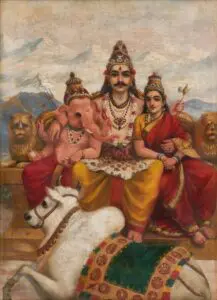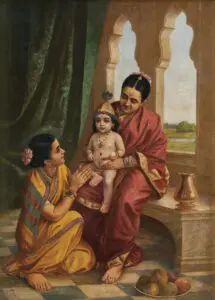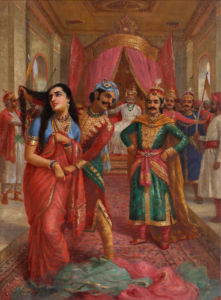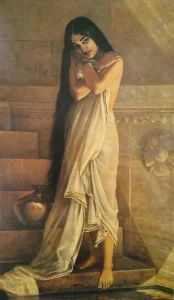Draupadi And Simhika
Raja Ravi Varma's Draupadi and the Enchantress Simhika, created in 1898, portrays a dramatic episode from the Mahabharata. It illustrates the demon Simhika transforming into a temptress to deceive Draupadi, only to have Sahadeva come to her rescue. Ravi Varma's unique blend of Indian storytelling and European artistic techniques brings energy and life to the composition, making it significant in both artistic and cultural dimensions. The painting stands as a vivid testament to Varma's ability to blend mythological narrative with visual grandeur.
Year 1898
About the Artwork
The story of Draupadi and the Enchantress Simhika unfolds from the ancient Indian epic, the Mahabharata. In this tale, Simhika, a demoness, seeks vengeance upon Draupadi for the death of her husband, Shardula, at the hands of Arjuna. Simhika cunningly transforms into an alluring woman, luring Draupadi into the forest under the guise of showing a temple. The encounter takes a perilous turn as Simhika reveals her true intentions. However, Draupadi's cries for help draw Sahadeva, the youngest of the Pandavas, who comes to her rescue and incapacitates the demoness. Raja Ravi Varma, known for his masterful integration of European realism with Indian subjects, captures the intense drama of this story in his painting, showcasing not just artistic skill but a deep understanding of cultural narratives.
Did You Know
Raja Ravi Varma is celebrated for his pioneering style that harmonized traditional Indian subjects with European techniques, making his work accessible yet rooted deeply in cultural narratives.
In the epic Mahabharata, Draupadi is often celebrated for her unwavering strength and resilience amid adversity, making her a revered figure in Indian literature.
The use of chromolithograph prints in Varma’s era allowed for widespread dissemination of his art, democratizing access and influencing popular visual culture significantly.
Liked what you see? Add it to your collection.
Enjoyed reading? Share it.
... continued
Physical Dimensions
The painting measures 180 x 110 cms.
Style and Significance
Raja Ravi Varma's work is characterized by its blend of Indian and European art styles. This painting, like many of his others, is a chromolithograph print, which was a common method of reproduction during his time. The artwork is significant not only for its artistic value but also for its representation of a pivotal scene from Indian mythology.




